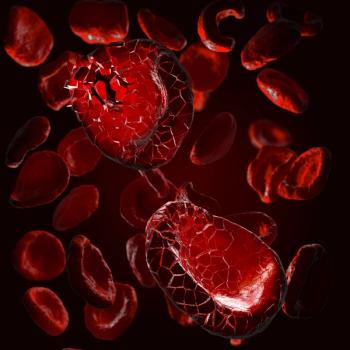
- ONCOLOGY Vol 15 No 1
- Volume 15
- Issue 1
Perspectives on the Use of Fluorinated Pyrimidines
The fluorinated pyrimidines, in particular 5-fluorouracil (5-FU), are among the oldest cytotoxic agents still in broad use today. To some degree, this continued use of 5-FU is a bit of an embarrassment to those of us who spend considerable amounts of
The fluorinated pyrimidines, in particular5-fluorouracil (5-FU), are among the oldest cytotoxic agents still in broad usetoday. To some degree, this continued use of 5-FU is a bit of an embarrassmentto those of us who spend considerable amounts of time trying to developsomething better with which to replace it. On the other hand, the ongoing andwidespread use of 5-FU and related agents underscores the considerablescientific achievement the development of 5-FU represented. The magnitude ofthis achievement is perhaps not fully appreciated until one considers thedifficulty encountered in trying to develop an agent to surpass its efficacy.
First described by Heidelberger et al in 1957,[1] 5-FU was whatis now termed "a rationally designed drug," based on the observationthat the uptake of uracil was greater in tumor cells than in nonmalignant cells.Over the past 4 decades, numerous investigators have explored and characterizedthe pathways by which 5-FU disrupts cellular replication. Based on thisscientific understanding, multiple modulation strategies have been developed toexploit this knowledge and thus increase the clinical efficacy of 5-FU. Theseefforts have met with variable degrees of success. Overall, however, whileresponse rates have improved somewhat and modest survival benefits in theadjuvant setting have been achieved for some diseases, little if any survivaladvantage in patients with advanced disease has been achieved. Further, severe,sometimes life-threatening toxicities may still be encountered.
Questions Still to Be Answered
Where, then, do we go from here with the fluorinatedpyrimidines? Have we pushed the limits of our understanding of biomodulation, orcan further modifications in how we administer these agents make a realdifference in efficacy? Can we, through molecular genetic characterization ofthe tumor, identify those patients who are most or least likely to benefit from5-FU and tailor treatment decisions accordingly? What are the benefits and thedrawbacks to the orally-administered analogues of 5-FU that are enteringclinical practice? Finally with numerous new agents entering clinical practice,how can the older and newer fluorinated pyrimidines be most effectivelyincorporated into combination regimens?
These and other pertinent questions were addressed by theparticipants of this symposium. The presentations and the discussion thatfollows in this publication highlight the importance and the complexity of theseissues. The questions are far easier to ask and explore than to definitivelyanswer. Nevertheless, it is clear that we continue to make considerable progressin our understanding of these issues, and with this progress comes new treatmentoptions and new hope for our patients.
References:
1. Heidelberger C, Chanakari NK, Danenberg PV, et al:Fluorinated pyrimidines: A new class of tumor inhibitory compounds. Nature179:663-666, 1957.
Articles in this issue
almost 25 years ago
Nursing Strategies for Patients on Oral Chemotherapyalmost 25 years ago
Capecitabine in Colorectal Canceralmost 25 years ago
UFT in the Treatment of Colorectal and Breast Canceralmost 25 years ago
Clinical Status of Capecitabine in the Treatment of Breast Canceralmost 25 years ago
Patient Selection for Oral Chemotherapyalmost 25 years ago
Other Fluorinated Pyrimidines in the Treatment of Solid Tumorsalmost 25 years ago
Oral Fluoropyrimidine-Based Combination Therapy in Gastrointestinal CancerNewsletter
Stay up to date on recent advances in the multidisciplinary approach to cancer.


















































































